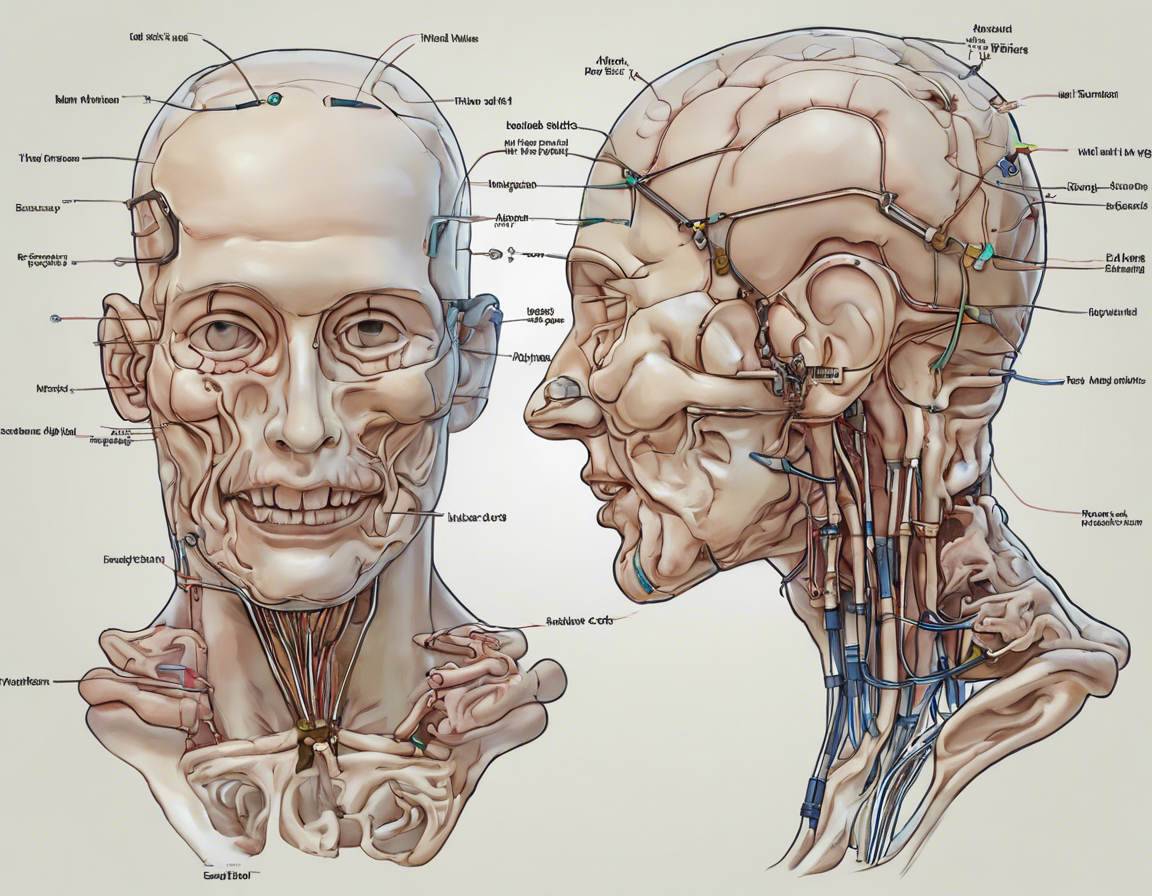Imagine a medical procedure that can potentially change a person’s life in the most profound way possible – a head transplant. While this idea may sound like something out of a science fiction novel, advancements in medical technology have made this concept within the realm of possibility. A Brain Bridge Head Transplant, also known as a full head transplant, involves surgically attaching one person’s head onto another person’s body. This groundbreaking procedure could offer hope to individuals with severe disabilities or terminal illnesses, providing them with a chance to have a better quality of life. In this article, we will explore the science behind the Brain Bridge Head Transplant, the potential benefits and risks, and the ethical considerations surrounding this controversial procedure.
The Science Behind the Brain Bridge Head Transplant
The idea of a head transplant dates back to the early 1900s, but it wasn’t until recently that significant progress has been made in making this procedure a reality. The first successful head transplant on a primate was carried out in 1970 by Dr. Robert White, demonstrating the possibility of reconnecting the spinal cord and blood vessels to enable the transplanted head to function.
Fast forward to the present day, and scientists and surgeons are now exploring the potential of performing a full head transplant on humans. The procedure involves several key steps:
- Donor Selection: Finding a suitable donor body that matches the recipient’s head in terms of blood type and tissue compatibility.
- Surgical Procedure: Carefully removing the recipient’s head and attaching it to the donor body, ensuring that blood vessels, nerves, and the spinal cord are properly connected.
- Recovery and Rehabilitation: Post-operative care is crucial for the success of the transplant, including physical therapy, immunosuppressive medication to prevent rejection, and psychological support for the patient.
While the science behind the Brain Bridge Head Transplant is complex and challenging, advancements in surgical techniques, immunosuppressive drugs, and neurotechnology have brought this procedure closer to reality.
Benefits and Risks of the Brain Bridge Head Transplant
The potential benefits of a Brain Bridge Head Transplant are both groundbreaking and life-changing. For individuals suffering from severe spinal cord injuries, neurodegenerative diseases, or terminal illnesses, a head transplant could offer them a chance at a new life, free from pain and disability. The procedure could also pave the way for advancements in regenerative medicine and neuroprosthetics, leading to new treatments and therapies for a wide range of conditions.
However, with great potential comes great risk. The Brain Bridge Head Transplant is a highly complex and risky procedure, with the potential for complications such as rejection, infection, nerve damage, and psychological trauma. The long-term effects of the transplant, both physically and psychologically, are still largely unknown, raising ethical concerns about the risks and benefits of such a radical procedure.
Ethical Considerations
The Brain Bridge Head Transplant raises numerous ethical questions that must be carefully considered before moving forward with such a procedure. Some of the key ethical considerations include:
- Informed Consent: How can a person provide informed consent for a procedure that is so experimental and high-risk?
- Identity: Would the recipient of a head transplant retain their sense of self and identity, or would they feel like a completely different person?
- Resource Allocation: Given the high cost and complexity of the procedure, how should limited resources be allocated in healthcare systems that are already overburdened?
- Societal Impact: How would society view individuals who have undergone a head transplant, and what implications would this have on social norms and perceptions of disability and identity?
Navigating these ethical considerations is crucial to ensuring that the Brain Bridge Head Transplant is carried out in a responsible and ethical manner, prioritizing the well-being and autonomy of the individuals involved.
Frequently Asked Questions (FAQs)
1. Is a Brain Bridge Head Transplant the same as a brain transplant?
No, a Brain Bridge Head Transplant involves attaching one person’s head onto another person’s body, while a brain transplant involves transplanting a brain into a new body.
2. What are the potential benefits of a head transplant?
The potential benefits include alleviating severe disabilities, spinal cord injuries, and neurodegenerative diseases, providing individuals with a chance at a better quality of life.
3. What are the risks associated with a Brain Bridge Head Transplant?
The risks include rejection, infection, nerve damage, psychological trauma, and unknown long-term effects on physical and psychological health.
4. Who is eligible for a head transplant?
Eligibility criteria for a head transplant would likely be determined based on individual medical conditions and the potential benefits of the procedure.
5. How close are we to performing a successful Brain Bridge Head Transplant on humans?
While significant progress has been made in animal studies, human trials are still in the early stages, and more research and development are needed before the procedure can be considered safe and effective.
In conclusion, the Brain Bridge Head Transplant represents a groundbreaking advancement in medicine that has the potential to transform the lives of individuals facing severe disabilities and illnesses. While the procedure poses significant challenges and ethical considerations, ongoing research and advancements in medical technology may one day make this pioneering surgery a reality.
